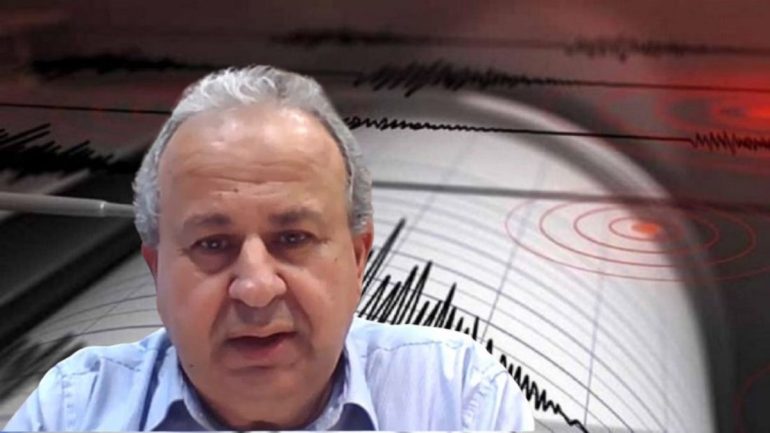A post-earthquake activity can last for months "and we can not rule out a felt aftershock ", stated to KYPE the Deputy Director of Geological Survey Christodoulos Hatzigeorgiou, adding that seismologists are monitoring post-earthquake activity.
Today, Tuesday, at 03:08, a strong earthquake of magnitude M = 6.1 on the Richter scale was recorded by the seismological network of the Department of Geological Survey. The quake affected the sea area, 50 km west-northwest of Polis Chrysochous and had a focal depth of 25 km. The earthquake was strongly felt throughout Cyprus, especially in the province of Paphos. It was also felt / perceived throughout the eastern Mediterranean.
The Deputy Director of the Geological Survey, when asked if a strong earthquake was expected, given that It has been several years since an earthquake of this magnitude occurred in the region of Cyprus, Mr. Hadjigeorgiou said that we are in a seismogenic area, where an earthquake can happen at any time.
"No earthquake is expected. You can not be sure that there will be an earthquake in 20 years. Our two major earthquakes were in 1996 which was southwest of Cyprus and in 1995, on February 23, which was then catastrophic. But that earthquake was much closer to the shoreline. At that time there was no seismological network of the Department to have accurate measurements, etc., to know what the genesis mechanism really was ", he added.
As he said, the estimates were that it was in the rift that is of West Paphos, in the sea area, "while the specific earthquake took place in the eastern part of the sinking zone of the Gulf of Antalya, where the African plate is sinking under the Eurasian , which is a different mechanism of earthquake generation ".
"I believe that the distance, the focal depth, have contributed to the earthquake not being catastrophic. It was strongly felt especially in the Province of Paphos but so far as far as I know there is no information at least for serious damage, some minor damage, the course will show us ", write down.
Answering a question, Mr. Hatzigeorgiou said that a series of imperceptible aftershocks has followed.
"The maximum recorded is of the order of 3,1 on the Richter scale and seismologists are monitoring this post-seismic activity", he said. You understand, he added, "A post-earthquake activity can last for months and we can not rule out a felt aftershock. We may have, we may not have. No one can predict it ".
He went on to say that "If we consider the 1995 earthquake then there were some significant aftershocks of about 5 on the Richter scale." Possibly, he said, "To be in a different rift and a different mechanism of its genesis. So, the fact that it was in the specific part of the sinking zone and the distance has helped to prevent the earthquake from being destructive ".
Asked about the initial tsunami alert, Mr. Hatzigeorgiou said that a valid tsunami alert was issued by the European Network.
"The Civil Defense was immediately informed, which in turn informed us," he said, adding that "evaluating the data, however, there was no substantial risk of creating a tsunami from the specific earthquake."
Commenting on whether there is such a possibility in Cyprus, Mr. Hatzigeorgiou answered in the affirmative, saying that of course there is.
"Historically there are data, which show us that there were tsunamis in Cyprus in the past and it is not ruled out that we may have a tsunami in the future", he added.
In conclusion, Mr. Hatzigeorgiou recommended more calm and that everyone knows how to act in case of an earthquake.
Historical data for 1995 and 1996
On February 23, 1995, a devastating earthquake measuring 5,9 on the Richter scale shook the province of Paphos with 2 dead. Several houses collapsed in the villages of Pano Arodes and Miliou. Damage was also caused to the villages of Peristerona, Steni, Gialia, Argaka, Pomos, Pyrgos, Lefka, Neo Chorio Akama, Latsi and Poli Chrysochous.
On October 9, 1996, a very strong earthquake measuring 6,8 on the Richter scale occurred in the southwestern part of Cyprus. It caused panic among the residents of Paphos and Limassol, as well as tenants of apartment buildings in Nicosia, Larnaca and Paralimni. Two people died of secondary causes and 20 were slightly injured. Limited damage was caused, mainly in Paphos and Limassol.
